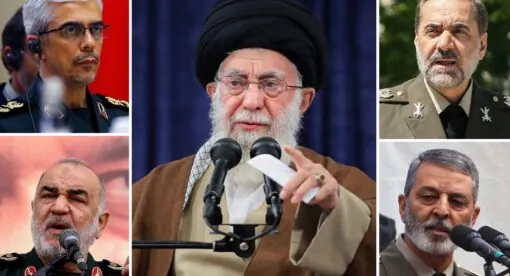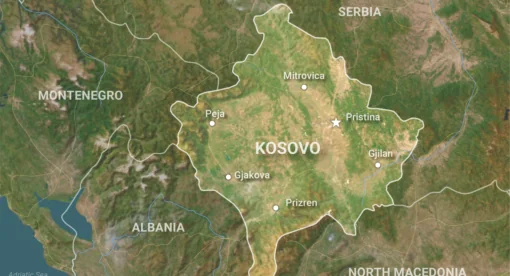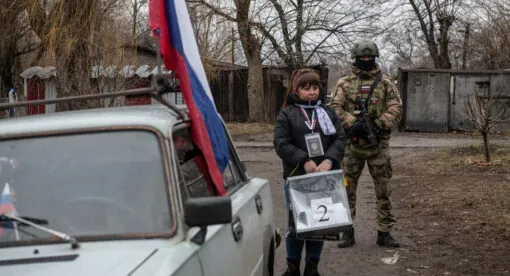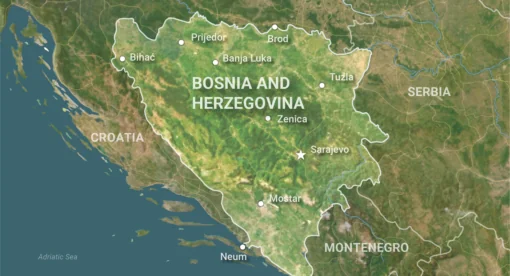The focal point of Indian-Iranian economic relations has undergone a fundamental shift in recent years, from being primarily about Indian oil imports to being about how Iran can serve as an entry point to facilitate India’s economic integration with Central Asia and beyond. India has been engaged with Iran and a host of regional partners in recent years to develop two major north-south infrastructure corridors designed to expand Indian trade and investment in Afghanistan, Central Asia, Russia, and Europe. Today, Indian goods are shipped across the Arabian Sea to the southern Iranian ports of Bandar Abbas and Chabahar, and from there northward by road and rail through Afghanistan, and into the Central Asian republics , Russia, Turkey and Europe.

India’s key long-term strategic interests in Central Asia include accessing energy resources, expanding India’s economic influence, and deepening its regional integration. However, India’s ability to pursue these goals is being constrained in the short term by three complicating factors: Iran’s conflict with the United States, Iran’s deepening economic relations with China, and the Taliban’s future role in Afghanistan.
The Bigger Picture

In recent years, a great deal of attention has been given to China’s Belt & Road Initiative (BRI), a massive, multi-country Eurasian infrastructure initiative that seeks to connect China’s industrialized eastern seaboard with European markets by traversing across Central Asia and Russia through expansive new road and rail networks. But much less attention has been given to some major Indian infrastructure initiatives as well as dozens of other bilateral and multilateral transport projects underway throughout Asia.
In this regard, Iran’s economic relations with India, China, Russia, Turkey, and others could be viewed as just pieces of a much larger process of Asian economic integration that has been underway for the last few decades. A key challenge for India is to manage the different aspects of its relationship with China as both a strategic competitor and important economic partner as both economies continue to deepen their economic integration with Iran, Central Asia, Russia, Europe, and one another. Viewed within this bigger picture, the India-Iran economic relationship takes on a more critical role in enabling India to pursue its long-term strategic interests in the region.
India’s Interests in Central Asia
India’s key objectives in the region were articulated in India’s 2012 “Connect Central Asia” policy document, but in recent years Indian efforts to engage in the region have taken on a greater urgency as China’s economic influence in the region has grown. Among India’s key interests are the following:
- India seeks access to Central Asia’s supplies of uranium, natural gas, oil, and coal as part of its national energy security strategy
A goal of India’s energy security policy is to reduce its overdependence on crude oil from the unstable Persian Gulf region by diversifying its sources of crude oil with new purchases from Africa, the United States, and other sources. In this context, India views access to Central Asian natural gas resources as important to its energy security strategy. Likewise, access to supplies of uranium from Uzbekistan and Kazakhstan are of critical importance to India’s civilian nuclear energy program. The region also holds deposits of gold, silver, aluminum, and other strategic minerals of interest to Indian industrial manufacturers.
- India seeks to become a regional economic power in Central Asia, limit Pakistan’s influence, and compete more effectively with China’s influence in the region
Following their 1991 independence from the former Soviet Union, the Central Asian republics at first welcomed increased economic investment by China as a way to balance Russia’s historic influence in their economies. But today there is a growing concern about China exercising too much economic influence in the region. This has made trade and investment with other partners such as India, Japan, and Europe increasingly attractive. While the level of India’s aid, trade, and foreign direct investment in the region has been negligible to date, the current context presents India with an opportunity to meaningfully scale up its economic diplomacy. Much more expansive levels of Indian aid, trade, and foreign direct investment in the region could lay the foundation for enabling India to pursue its long-term goals of expanded access to markets in Central Asia, Russia, and Europe while potentially diluting Chinese influence.
India is pursuing this objective through a number of approaches, including through increased trade and cooperation with Russia; by becoming a full member of the Shanghai Cooperation Organization in 2017; by negotiating a free trade agreement with the Russia-led Eurasian Economic Union, which includes Armenia, Belarus, Kazakhstan, Kyrgyzstan, and Russia; and by playing an active role in the Asian Infrastructure Investment Bank since 2016. While relatively new, such organizations have the potential to politically facilitate and consolidate increased regional economic integration.
More specifically, India has strategic interests in each of the five Central Asian countries:
- In Kazakhstan, India’s major strategic interest is to access its uranium deposits for supporting India’s national nuclear energy security strategy. Kazakhstan is the world’s largest producer of uranium, holding an estimated 15 percent of the world’s recoverable uranium, and has been the source for nearly 80 percent of India’s uranium imports since 2014. Kazakhstan has diplomatically supported efforts by India to be granted an exemption that allows civil nuclear cooperation with the Nuclear Suppliers Group countries (even though India has not signed the Nuclear Non-proliferation Treaty), and supports India being allowed membership into the group. Supported by the Kazakh-Indian Business Council, set up in 2016, the two countries have signed several agreements to supply uranium to India, most recently in 2019 with a uranium supply contract for 2020-2024, while also agreeing to increase cooperation in the areas of oil, gas, and renewable energy.
- Uzbekistan, which is the seventh-largest exporter of uranium in the world, is also strategically significant for India’s nuclear power industry, and the two countries signed a long-term supply contract in 2019. Bilateral trade and investment are expected to increase as negotiations are underway for a free trade agreement and the Uzbek state railway company is developing new lines into Afghanistan and Iran to provide Uzbekistan with access to the Arabian Sea port at Chabahar.
- Turkmenistan, which holds the world’s fourth-largest reserves of natural gas, is primarily of significance to India because of the long-planned Turkmenistan-Afghanistan-Pakistan-India natural gas pipeline, which could ultimately provide energy-dependent India with up to 33 billion cubic meters of gas per year. While construction delays have continued into 2020, the long-term implications of the completed pipeline are significant for India’s national energy security strategy.
- Kyrgyzstan has had minimal economic relations with India, but there are signs that this could change as India has interests in its gold, coal, uranium, antimony, and other metal deposits, and in developing its hydroelectric capacity for exporting electricity to India. In recent years, India and Kyrgyzstan have signed a bilateral investment treaty and established the India-Kyrgyz Business Forum, and Kyrgyzstan is streamlining its logistics and transit to connect with Chabahar port. Kyrgyzstan is also part of the Eurasian Economic Union, which is negotiating a free trade agreement with India.
- Tajikistan has a small economy that has been of little economic interest to India, but its geographic location in the center of Central Asia is of significant strategic interest to India. Its southeastern border sits just north of Afghanistan’s eastern Wakhan Corridor peninsula, a geostrategic strip of land that borders China to the east and Pakistan-administered Kashmir to the south. But since the 1947 partition with Pakistan, India has not had direct land access to the region, and so has set up its only foreign military base in Tajikistan, operated in collaboration with the Tajik Air Force.
India’s Plans for the Region
India has worked with regional partners to establish the India-Central Asia Business Council. , which held its first meeting in February 2020, to deepen connections between Indian business associations and the chambers of commerce of states in the region. The parties are also establishing an India-Central Asia Development Group through which India would offer financing for development projects in the region through its EXIM Bank Lines of Credit and Buyers’ Credit facilities and the provision of technical expertise. Such trade and investment is expected to be facilitated by three major infrastructure initiatives in which India has been actively participating:
- INSTC: While China’s east-west BRI has received a great deal of attention, India has been working with Iran and Russia to establish the International North-South Transport Corridor (INSTC) – a 7,200-kilometer, multi-modal route that brings Indian goods across the Arabian Sea to the southern Iranian port of Bandar Abbas, where it moves northward by road and rail through Iran and Azerbaijan to Russia and Europe. Ultimately, INSTC will connect India with Turkey and the Central Asian republics as well as the east-west Trans-Siberian rail network that will allow access to both the EU and China markets.

- Chabahar: India is working with Iran and Afghanistan to develop the southern Iranian port of Chabahar on the Arabian Sea and transport goods shipped from India northward through Iran to Afghanistan and Central Asia via the Chabahar-Zahedan-Mashhad railway. While longstanding hostilities between Pakistan and India have prevented land-based trade between India and Afghanistan and Central Asia since the partition in 1947, this route allows Indian goods to access Afghanistan and Central Asia while bypassing Pakistan. And because Afghanistan has long been dependent on Pakistan in order to get access to the Indian Ocean, this route now provides Afghanistan with an alternative trade route to the Indian Ocean through Iran. A May 2016 agreement between India, Iran, and Afghanistan to connect Chabahar with the entire region provided for a contract with an Indian state-owned enterprise, Indian Ports Global Ltd., to operate the southern port at Chabahar, Shahid Beheshti. India has provided a capital investment of $85 million and annual revenue expenditure of $23 million toward equipping two berths at Chabahar for Phase I of the port’s development.
- Ashgabat Agreement: The Ashgabat Agreement is another international multi-modal transport corridor being developed to facilitate trade and investment between Central Asian and Persian Gulf countries, which India joined in 2018. Members now include the Gulf countries of Iran and Oman and the Central Asian countries of Turkmenistan, Uzbekistan, and Kazakhstan, along with Pakistan and India. The agreement established the Iran-Turkmenistan-Kazakhstan railway line and synchronizes several other major infrastructure projects currently underway for connecting the Gulf with Central Asia and Eurasia, and particularly with INSTC.
India is also engaged in the development of other major regional transport programs to promote trade and investment, such as the Transport Corridor Europe-Caucasus-Asia, which connects the regions of the Black Sea basin, South Caucasus, and Central Asia, and the Central Asia Regional Economic Cooperation, which connects countries in Central Asia and China with parts of Transcaucasia and South Asia. Additionally, India and the five Central Asian nations are exploring the establishment of “air corridors” similar to what India established in 2018 with Afghanistan, which would provide special clearing and customs facilities to expedite regular cargo flights to facilitate trade. India has invested in all of these initiatives to facilitate its long-term economic integration into Central Asia and beyond.
The Taliban’s Role in Afghan Peace Talks
After nearly two decades of supporting U.S.-backed governments in Kabul with nearly $2 billion in foreign aid for economic development and viewing the Taliban as a terrorist organization backed by Pakistan, India today finds itself on the wrong side of the emerging new dispensation in Afghanistan. With the United States intending to pull out of Afghanistan, an emerging consensus among Russia, China, Pakistan, and Iran appears to support a key role for the Taliban as a legitimate actor that must have a major role in any final peace agreement. This reality was underscored by the February 2020 agreement between the United States and the Taliban and the current peace talks underway in Doha.
These developments put India in an awkward position, since its strategy for Indian economic integration with Central Asia had long envisaged the Taliban being defeated by the government in Kabul. Yet, by most accounts, the consensus is that there will be either a power-sharing agreement between the current Afghan government and the Afghan Taliban or a future Taliban government that will require India to adjust its policy. In either case, India is concerned about the possibility of Pakistan’s links with the Taliban giving it greater influence within Afghanistan and about the likelihood that the power vacuum created by a U.S. military withdrawal will be filled by increased Chinese influence in the form of new BRI-related infrastructure investments in Afghanistan.
The India-Iran-U.S. Triangle
When the United States withdrew from the international Joint Comprehensive Plan of Action agreement and imposed unilateral sanctions against Iran in November 2018, it gave India and other major importers of Iranian oil a six-month waiver during which they were expected to reduce Iranian oil purchases “to zero.” By May 2019, India had fully complied with U.S. demands, deeply disappointing Iran.
Since then, Iranian-Indian trade has been reduced to mainly non-oil related goods, with payments through an alternative rupee account set up through UCO Bank. However, despite the elimination of India’s crude oil purchases, India and Iran continue to move forward with negotiations for a free trade agreement, a double-taxation avoidance agreement, and an Agreement on Mutual Legal Assistance on civil and commercial matters designed to ease visa and legal issues to enable increased bilateral ties.
As the U.S. sanctions against Iran threatened to penalize other countries and foreign companies doing business with Iran, Indian firms became increasingly reluctant to participate in port construction contracts to build the facilities for Chabahar port in Iran. To address Indian concerns, the United States offered special waivers from the sanctions for Indian firms engaged in construction at Chabahar because the United States views giving Afghanistan an alternative route to the Indian Ocean (and decreased dependence on Pakistan’s Gwadar port) as essential for the successful economic reconstruction of Afghanistan. However, despite such waivers, Indian firms continued to delay planned work on the port development because they continued to fear U.S. retaliation and other consequences. Additionally, Indian government budget commitments to Chabahar fluctuated, first declining by two-thirds in 2019-2020 before increasing again in 2020-2021.

Finally, in July 2020, Iran apparently lost patience with the extended delays by Indian firms that had been given contracts to build parts of the Chabahar-Zahedan railway and canceled the contracts, awarding them instead to Chinese and other foreign firms. The move is viewed as a setback for Indian efforts to expand its economic influence in the region. This was followed by the October 2020 decision by Iran to eliminate Indian firms from consideration for the development of the Farzad-B gas field in the Persian Gulf. Even though the field had been discovered by three Indian firms in 2008, the two countries have been unable to agree on equitable terms for the development of the field after years of negotiations.
India’s decision on oil purchases, its wavering on investment in Chabahar, and its inability to agree on the terms of the development of the Farzad-B gas field have all caused consternation in Iran about India’s dependability. While a setback for India-Iran relations, India’s decisions can be seen within the broader context of its foreign policy tilt toward the United States (particularly regarding the U.S.-China rivalry) and its deepening economic relations with Saudi Arabia, the Gulf, and Israel. Some suggest that India’s inability to strike a balance between its relations with Iran and the United States indicates that India has lost its famed ability to practice “strategic autonomy” in its foreign policy. As long as India persists in its tilt toward the United States in the U.S.-Iran conflict, its ability to pursue its regional economic integration strategy through Iran will be constrained.
Deepening China-Iran Economic Relations
When India eliminated its oil purchases, Iran sent signals that it might allow a much greater role for China in Chabahar’s development and possibly even build a railway connecting Chabahar port with Pakistan’s Gwadar port, which is a key segment of China’s BRI known as the China-Pakistan Economic Corridor. Such a step would allow for even greater Chinese economic influence throughout the entire Indian Ocean coastal area – and would undermine India’s goal of expanding its economic influence in the region. How serious Iran is about taking such steps remains to be seen, but doing so could present major obstacles for India’s long-term strategic goals in the region.

Building on such concerns, a July 2020 report in The New York Times detailed the contours of a vast new economic and security partnership between Iran and China that would clear the way for up to $400 billion in Chinese investments over the next 25 years, vastly expanding China’s presence in Iran’s economy in sectors such as energy, banking, telecommunications, ports, high-speed railways, airports, and subways. According to a leaked memo, China is set to develop free-trade zones in Maku, in northwestern Iran, in Abadan, where the Shatt al-Arab river flows into the Persian Gulf, and on the Gulf island Qeshm. The agreement includes increased military cooperation, including joint training and exercises, joint research and weapons development and intelligence sharing. In exchange, China would get access to a steady and heavily discounted supply of Iranian oil and new proposed port facilities on the Sea of Oman, including at Jask, just outside of the Strait of Hormuz on the entrance to the Persian Gulf, a location that would give China geostrategic proximity to waters through which much of India’s oil imports transit.
While many in the west viewed the China-Iran investment deal as a rebuke to U.S. efforts to isolate Iran, it could also be viewed as a rebuke to India for having disappointed Iran. Any outcome that diminishes Indian economic influence in Iran while expanding that of China is arguably a setback for India’s goals in Central Asia and beyond.
A Long-Term Perspective
In the short term, India’s strategic initiatives in Iran and Central Asia will be challenged by the need to navigate through complicating factors such as the U.S.-Iran conflict, India-Taliban relations, and China’s growing economic influence in Iran. But it is often easy to get overwhelmed by all of the short-term gains, setbacks, and jockeying for power among the various economic actors in the region. Over the long term, it is likely that India, China, Russia, Iran, Turkey, and others will all play important roles in forging the Asian economic integration process in the decades ahead.
Dr. Rick Rowden is a Senior Economist at Global Financial Integrity an Adjunct Professorial Lecturer in the School of International Service at American University in Washington, D.C. Dr. Rowden specializes in the long-term national economic development strategies of developing countries and the emerging field of South-South economic relations. Previously, Rowden has served as a senior policy analyst at ActionAid, Inter-Regional Adviser for the United Nations Conference on Trade and Development, and consultant to the United Nations Development Program and the World Health Organization.
The views expressed in this article are those of the author and not an official policy or position of the Newlines Institute.







